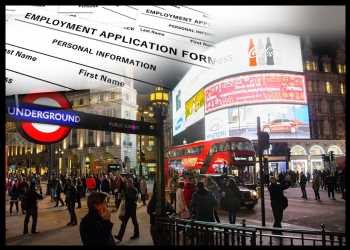UK Unemployment Rate Rises, Wage Growth Strengthens

The UK jobless rate edged up again in the three months ended October as firms held back recruitment amid recession fears but wage growth remained strong, fueling pressure on the Bank of England to hike interest rates further in a bid to rein in inflation.
The ILO jobless rate climbed to 3.7 percent in the three months to October, figures from the Office for National Statistics showed on Tuesday. This was in line with expectations and up from 3.6 percent in the quarter to September.
The employment rate increased 0.2 percentage points on the quarter to 75.6 percent.
The economic inactivity rate decreased 0.2 percentage points to 21.5 percent in the August to October period as more people above 50 years returned to work.
During September to November, the number of vacancies declined by 65,000 sequentially to 1.187 million. However, the ONS noted that vacancies remained at historically high levels despite five consecutive falls.
In November, payroll employment showed a monthly increase of 107,000 and the total hit a record 29.9 million.
Average total pay that includes bonuses, and regular pay that excludes bonuses grew 6.1 percent each on a yearly basis in three months to October. Earnings including bonuses were forecast to gain 6.2 percent and regular pay to rise 5.9 percent.
For regular pay, this was the strongest growth seen outside of the coronavirus pandemic period.
Further, jobless claims increased by 30,500 on the month in November, much bigger than economists’ forecast of 3,500. The claimant count held steady at 3.9 percent.
The ONS figures show the tightness in the UK labor market is not shifting significantly, Jane Gratton, head of people policy at the British Chambers of Commerce, said.
“Job vacancies remain at record highs, adding to the recessionary pressure businesses are facing.”
A recent survey report compiled by S&P Global showed that labor shortage and economic uncertainty dragged permanent job placements in November, and rising inflation coupled with competition for workers continued to send the starting salaries higher.
Source: Read Full Article
